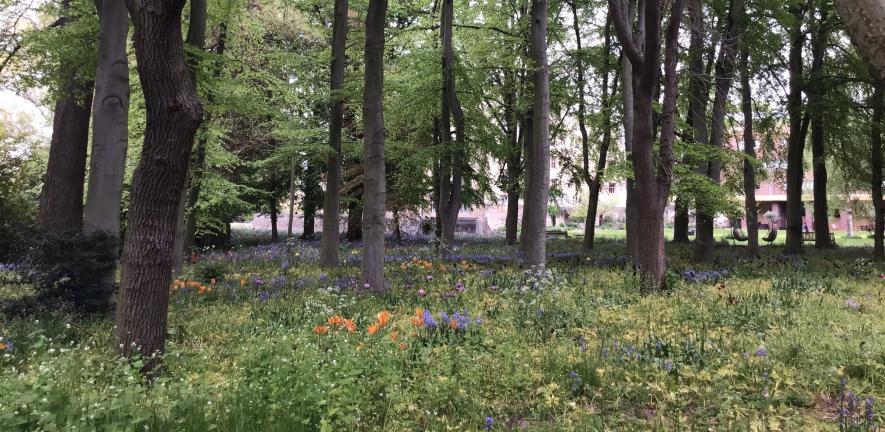
Submitted by Jessica Haskell on Mon, 2021-08-02 09:49
Amongst the turbulence of the pandemic, thousands found much-needed solace in the natural world. A survey conducted by Natural England found that 38% of respondents felt that nature and wildlife had become more important for their wellbeing since the first lockdown. This is perhaps unsurprising given the breadth of research demonstrating the mental health benefits associated with interacting with the natural world. However, our reliance on nature goes further than purely remedial: water purification, pest control, and agriculture all rely on naturally occurring processes, and many are governed by the mammals and insects that we see around us every day.
Sadly, increased urbanisation, climate change, and agricultural land-management practices, among other reasons, continue to cause major habitat loss, leading to 41% of UK species being in decline. A study by the RSPB also suggested that currently only 5% of land in the UK is being effectively looked after for nature. Optimising the habitat that is available for nature can help mitigate these impacts. Cambridge is home to 31 Colleges, each boasting their own grounds. Each area has its own nature quirks, from Robinson College’s Bin Brook, to Queens’ College’s towering elms, and each provides opportunities to make space for nature.
How are Colleges already promoting biodiversity?
In 2020, the University of Cambridge published its first Biodiversity Action Plan (BAP), in which it sets targets to bring about ‘significant and measurable improvement in the biodiversity of the University of Cambridge estate.’ The BAP works across the University’s operational and rural estate. As a Collegiate University, there is also the opportunity to support improvements for biodiversity across the Collegiate estate. To explore current approaches to biodiversity, I joined Engage for Change, a Cambridge Hub initiative in which students are supported in carrying out sustainability-focused projects. My aim was to research and publish an overview on the ways in which Cambridge Colleges are currently promoting biodiversity.
Few people know or care more about the College gardens than the Colleges’ gardeners. Similarly, if Colleges are to promote biodiversity in the long-term, interventions will need to be implemented in a way that doesn’t overburden gardening staff, who, as I have come to learn, already shoulder a vast workload making sure the College gardens are well cared for and maintained.
Over the past six months I have been interviewing over half of the College gardening teams in Cambridge. I’ve been finding out how they are making space for nature within their grounds and how they can be supported to do more.
Throughout these interviews, I have been blown away by gardening teams’ passion for wildlife, and the industrious ways that gardeners are promoting biodiversity while also following the brief of meeting a ‘quintessentially Cambridge College’ aesthetic. Almost all gardeners I interviewed were already establishing wildflower areas or even meadows, with the majority citing the King’s College wildflower meadow as their source of inspiration. Over half always prioritised pollinator-friendly planting strategies and every team spoke of the importance of moving away from College gardens that are dominated by striped lawns and finely managed borders. Instead, teams are embracing a more relaxed aesthetic, with larger designated ‘wilder’ areas that are only mown once a year, where log piles are left for insects and mammals, and wildflowers are left to grow. Gardeners embrace this shift, not only because it is more wildlife-friendly, but also because it can reduce part of their workload, enabling them to make even more improvements to College grounds. Similarly, it reduces the need to chemically treat what would have been large manicured lawn areas, a win-win scenario for both wildlife and gardeners. Many gardeners also spoke of the importance of the garden and its wildlife for students, with some running birdbox and bughouse building workshops for students as a way of them relieving stress and improving wellbeing, while also engaging with their natural surroundings.
What could the future look like?
Sustainability and biodiversity are increasingly at the forefront of society’s consciousness, with students prioritising more environmentally-responsible institutions for their place of study more than ever.
My time learning from College gardeners has been so enlightening and I hope to disseminate a final report to key College stakeholders, including College gardeners of course. I aim to inspire and inform action, ultimately aiming to establish a Cambridge College Corridor strategy. The strategy would map and expand the wildflower areas within every College, creating a wildflower ‘corridor’ across College gardens in central Cambridge. I hope that this project will not only foster collaboration and connections between the Colleges but will ultimately give wildlife a home in Cambridge.
Afterall, as one Head Gardener remarked to me: “The more we help nature, the more nature can help us."
Interested in hearing more? Please get in touch at kmlm2@cam.ac.uk.
Written by Kirsty Mackinlay
